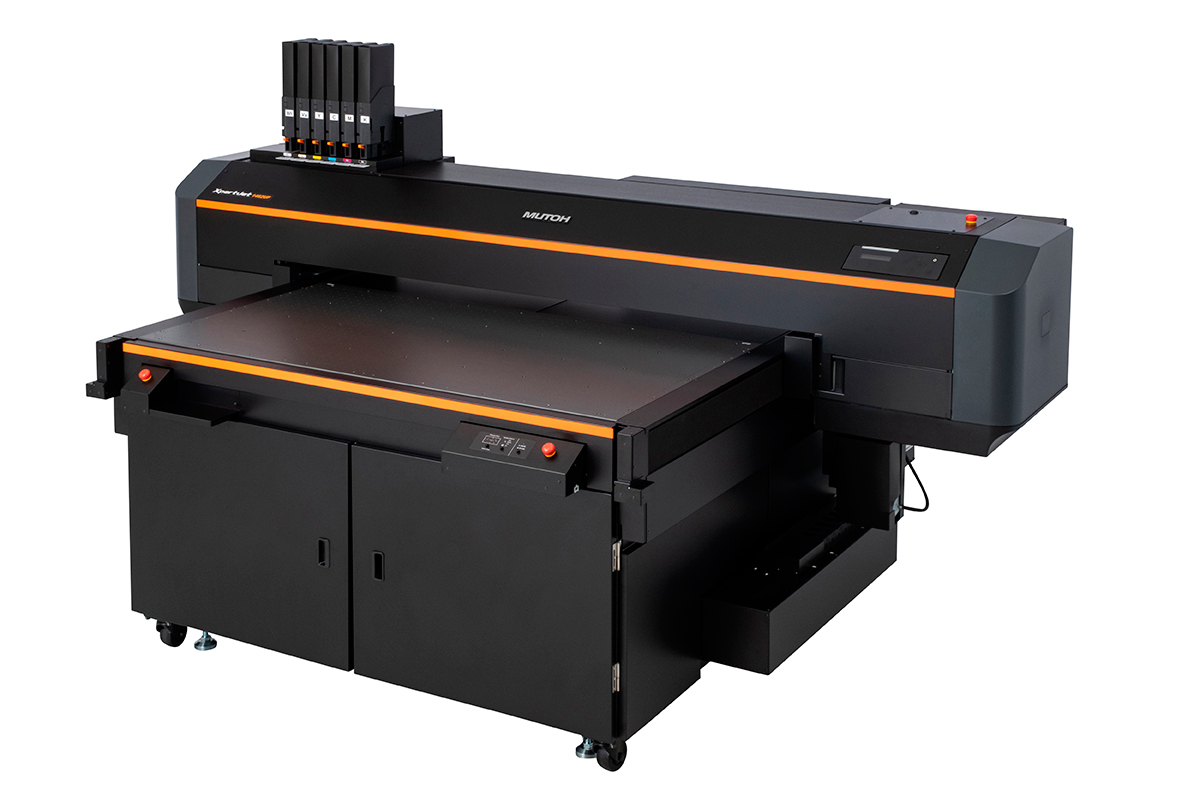

Founded in 1952, Mutoh Holdings has established itself as a world leader in large-format inkjet printers.

A company that crafts high-quality, high-precision products, Mutoh Holdings specializes in large-format inkjet printers, following the Japanese principle of monozukuri – the pursuit of perfection in manufacturing. For customers in Japan and around the world, the Tokyo-based firm is also a trusted provider of printer supplies and maintenance, 3D printers, design and measurement devices, and IT solutions.
“Mutoh Industry was established upon the development of the Drafter®, which is a drafting board used for designing,” says the company’s president, Yasuhiko Isobe. “That was 70 years ago, and all our growth since then has led to what we are today – a hardware and software manufacturer with a primary product that integrates a range of different technologies. Our large-format printers can adapt to any type of ink.”
In Mr. Isobe’s view, monozukuri comes down to Japanese manufacturers’ devotion to honing their products. “For things like printers, the technology needs to be precise without leeway,” he explains. “Let’s say our large-format printers take 10 hours to make. Five of those hours are required for assembly, so you might ask what we do with the remaining five. We spend that time fine-tuning and checking.”
While Mutoh has established overseas locations in Europe, the United States and Australia, its commitment to a meticulous manufacturing process means its factories have remained on home soil. “Our production requires the kind of engineering expertise that can only be found in Japan,” Mr. Isobe says.
Mutoh is dedicated to ensuring that its products contribute to a greener future. The use of eco-friendly inks is key to this drive, starting with the switch from solvent ink to eco-solvents. “Solvent ink isn’t environmentally friendly,” Mr. Isobe says. “It contains volatile organic compounds and when they dry out, a chemical vapor is emitted. It’s been the preferred choice, especially for large signs and displays, because it’s highly resistant to sunlight. However, ink with the same performance now exists in an eco-friendly form.
“Another new type of ink we’re focusing on is UV ink; it dries up and stabilizes immediately after printing using UV light, so it’s considered eco-friendly. However, it doesn’t have a strong resistance against sunlight, so we have yet to utilize it for printing signage. There’s also water-based ink that’s very eco-friendly, but there’s a limited amount of media that it can be printed on. Normal paper is fine, but magazine paper that has a sheen doesn’t absorb the ink, so it’s not printable on this kind of media.”
Among the newest printers to come off Mutoh’s production line is the XPJ-1462UF, the industry’s first ever medium-sized UV flatbed. “The plan for the next two to three years is to transition to mostly eco-friendly inks,” Mr. Isobe concludes.
The company’s latest products also reflect the rise of 3D printers. For example, the new Value 3D Magix MF-900 is able to model carbon fiber-containing materials – a capability that’s highly sought after by customers wishing to create prototypes for jigs and parts.
“As of today, we consider 3D printing as to be booming, even if business-wise it’s yet to be that lucrative,” Mr. Isobe says. “In fact, we act as an agent for an American large-scale 3D printing company. For now, the use of 3D printers is confined to making models or mockups, and as a 3D printer dealer we have incorporated their use, but that use is limited to the production of parts that require less sophistication. In terms of 3D printers, our focus is not on large-scale and is more directed to mid-to-small-scale printers.”
Among the IT products developed by Mutoh, there are a range of CAD tools, as well as the firm’s state-of-the-art VerteLith RIP software, which offers users complete control over the printing process – from workflow optimization, to color and layout management, to job preview functions. What’s more, customers can also subscribe to Mutoh Club, an exclusive web service that provides news and release information, allows you to check your printer’s status remotely with the Mutoh Status Monitor, and makes the latest manuals and printer drivers available for download.
When it comes to international business, Mutoh doesn’t plan to branch out from the three overseas regions in which it is already present, Mr. Isobe says: “Our emphasis right now is on North America, Europe and Australia. The reason we’re focused on developed nations is that we provide not only printers, but also ink. If we sell in Asia to countries like China, they tend to only purchase the printer and not the ink. They want to cut costs and therefore use cheaper, inferior ink. That business style is not desirable for us.”
0 COMMENTS